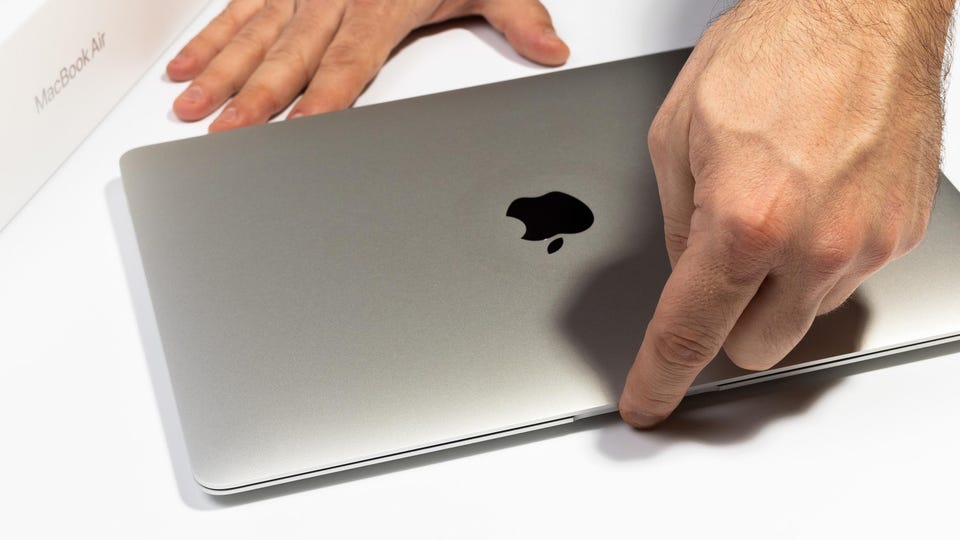Consumer Tech Apple’s Problematic MacBook Pro Decision Ewan Spence Senior Contributor Opinions expressed by Forbes Contributors are their own. Storyteller exploring digital worlds, mobile, music and podcasting New! Follow this author to stay notified about their latest stories. Got it! Aug 27, 2022, 04:56pm EDT | New! Click on the conversation bubble to join the conversation Got it! Share to Facebook Share to Twitter Share to Linkedin This week saw Apple debut its self repair program for the current Mac platform.
Starting with the M1 power MacBook Pro and MacBook Air laptops, users can order replacement parts, tools, and guides to refresh and repair their own machines. Unfortunately, Apple’s approach to user repairs leaves a lot to be desired from a practical point of view. Saratov, Russia – February 26, 2022: new modern silver Macbook Air 13 inch with M1 processor in .
. . [+] closed position closeup, white background.
Advertising of modern technology and portable device. getty The team at iFixit has taken a closer look at the process of changing a battery – which many would see as an obvious choice of component that will be replaced. This makes the process of switching out a component that will naturally degrade over time to be laughable at best: “At the time of writing, Apple will not sell you a replacement MacBook Pro battery.
They sell you a “Top Case with Battery and Keyboard. ” And so their guide has you remove literally every component from the top case. The laptop is built on the top case, so to get to it, you’ve got to demanufacture the whole thing.
” Consumers have a number of psychological hurdles to jump over if they want to change the laptop’s battery. First up is the guide on the process. ; an almighty 162-page battery replacement guide will take them through the process.
The price of the new assembly for that battery? $527 for the top case parts and another $50 for Apple’s recommended tools. . .
. although you will be generously refunded $88 if you return the replaced components. Why is the process so complicated? Because Apple designed the M1 MacBook Air and M1 MacBook Pro to have their batteries in these inaccessible and awkward places.
The design is inherently hostile to a simple battery swap-out. MORE FOR YOU Google Issues Warning For 2 Billion Chrome Users Forget The MacBook Pro, Apple Has Bigger Plans Google Discounts Pixel 6, Nest & Pixel Buds In Limited-Time Sale Event Apple could just as easily have started the M1 MacBook design brief with guidelines to ‘make it easier and cheaper to replace key parts’ such as the battery. For a company that likes to lean into its green credentials and environmentally friendly possibilities, replacing the battery is one of the easiest ways to extend a laptop’s useful life.
It becomes more portable, it becomes more efficient, and it is far cheaper both monetarily and environmentally to source a battery than it is to buy a new laptop. Even if the majority of consumers did not take up an option to switch out a battery at home – even if it was as simple as unscrewing the case, popping out a connector, and swapping out the part, it would reduce the workload and complexity for first- and third-party repair centres. Apple had the opportunity to change the consumer market when it launched the first Apple Silicon based laptops.
In terms of performance, the ARM-based chipset did just that on the inside. It’s both unfortunate and a huge missed opportunity that Apple did not take steps to make its laptops more accessible and more consumer-friendly on the outside. Now read the latest Mac, iPhone, and iPad headlines in Forbes weekly look at Apple.
. . Check out my website .
Ewan Spence Editorial Standards Print Reprints & Permissions.
From: forbes
URL: https://www.forbes.com/sites/ewanspence/2022/08/27/apple-macbook-pro-macbook-air-repair-battery/
